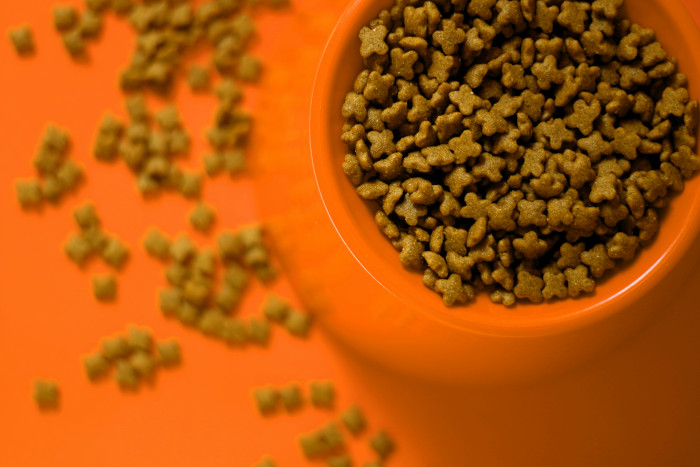Scatter Feeding: A Simple Way to Enrich Your Dog’s Dining Experience

By nature, dogs are opportunistic scavengers. In fact, the ability to find and consume food around human settlements is probably how dogs domesticated themselves in the first place.
While most pet dogs have become accustomed to two square meals in a bowl, the desire and impulse to scavenge remains deeply ingrained. Sniffing, seeking, and scrounging for food is a species-appropriate behavior for wild canines and domestic dogs alike. As companion animal guardians, we can use this innate impulse to everyone's benefit.
Dogs have an extraordinary sense of smell that is finely tuned to detect even the faintest whiffs of food. Their olfactory capabilities are nothing short of remarkable, allowing them to track scents, identify various odors, and locate food with astounding precision. Capitalizing on this powerful sense of smell can significantly benefit your canine companion and enhance their overall well-being. And scatter feeding is a great way to do that.
Scatter feeding is an alternative to the traditional method of serving kibble from a bowl. You've likely come across food puzzles and snuffle mats, which are fantastic tools for stimulating your dog's senses and intellect. Scatter feeding takes this concept to the next level, offering a dynamic and engaging "snacktivity" for your pup by scattering their food and letting them find it.
Embracing scatter feeding can be particularly beneficial for dogs with anxiety issues or those who tend to be hyperactive. Here's how scatter feeding can make a positive impact on your dog's well-being.
- Lowers arousal through eating and sniffing. Foraging for food and eating at a leisurely pace can help calm dogs and reduce their overall arousal levels.
- Provides mental enrichment and stimulation. Scatter feeding provides mental exercise and enrichment for your dog, which keeps their minds sharp and helps stave off boredom.
- Calms anxious or hyperactive dogs. For dogs with anxiety issues or a surplus of energy, scatter feeding can act as a therapeutic activity that helps them channel their energy into something positive.
- Prevents boredom. Scatter feeding keeps your dog engaged and entertained, preventing destructive behavior that may result from boredom.
- Promotes better digestion. For dogs who gobble their food quickly, scatter feeding slows down mealtime, reducing the risk of digestive issues and promoting healthy eating habits.
Scatter feeding is easy to do, and it doesn't require any special training or equipment. Simply use your dog's regular dry food or treats for this enriching practice, which you can do inside or outside. For inside scatter feeding, spread dry kibble on the floor or consider using a snuffle mat. For an outdoor adventure, head to your fenced backyard or patio and spread the kibble around there. If you have access to an unfenced grassy area, use a long lead (15 to 20 feet) for more space for scatter feeding. When feeding outside, be sure to keep an eye out for foxtails and other dogs, especially if your dog resource guards food.
Start by placing a small pile of kibble on the floor or ground and use the cue "find it" as you toss bits of kibble near the pile, gradually leading your dog further away. As your dog becomes more skilled at finding the food, you may want to progress to a larger grassy or wooded area to keep the activity challenging.
The key is to make scatter feeding a fun and enjoyable game for your dog. If they become frustrated or give up too soon, simplify the game by scattering food in a smaller area or in a place with fewer distractions. Wait until your dog has mastered each step before making it more challenging.
Scatter feeding is not only a terrific way to enrich your dog's life but also a common technique used in zoos with all kinds of animals. It’s a simple yet highly effective way to tap into your dog's natural instincts and provide mental and physical stimulation while promoting a sense of calm. You'll keep your dog busy and mentally satisfied by engaging their sense of smell and encouraging them to work for their food.
So why not kick the bowl habit and give scatter feeding a try? Your dog will love embracing their inner scavenger - and you’ll both love the benefits.

